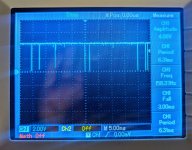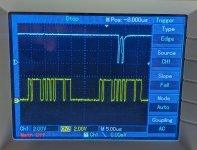daver2
10k Member
Yes, KSCOPE and GDEMO initialise the Dazzler correctly.
One of the early tests is to output 80 to port 0E (O 80 0E) and look for activity on the internal latch on the Dazzler. I will post where to check for you tomorrow.
If the card is not linked properly for ports 0Eh and 0Fh we are not going to get anywhere fast!
J1 to J1 etc. should link the card for the correct I/O ports by default.
Dave
One of the early tests is to output 80 to port 0E (O 80 0E) and look for activity on the internal latch on the Dazzler. I will post where to check for you tomorrow.
If the card is not linked properly for ports 0Eh and 0Fh we are not going to get anywhere fast!
J1 to J1 etc. should link the card for the correct I/O ports by default.
Dave
Last edited:



